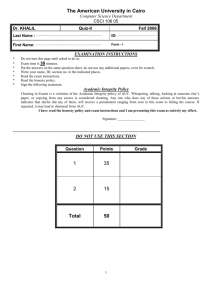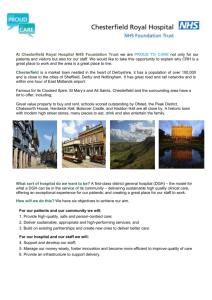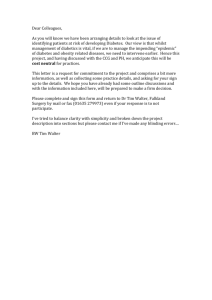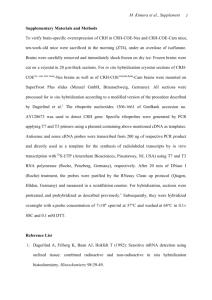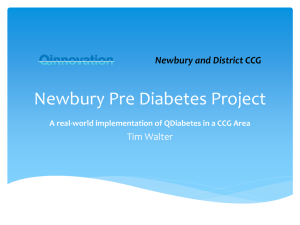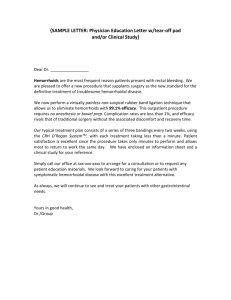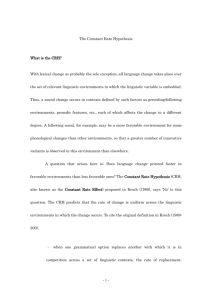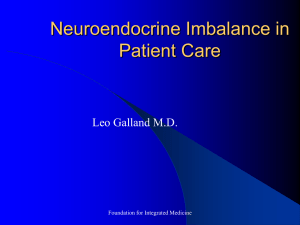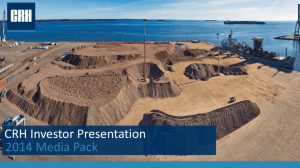mergers & acquisition appraisal for inorganic growth
advertisement
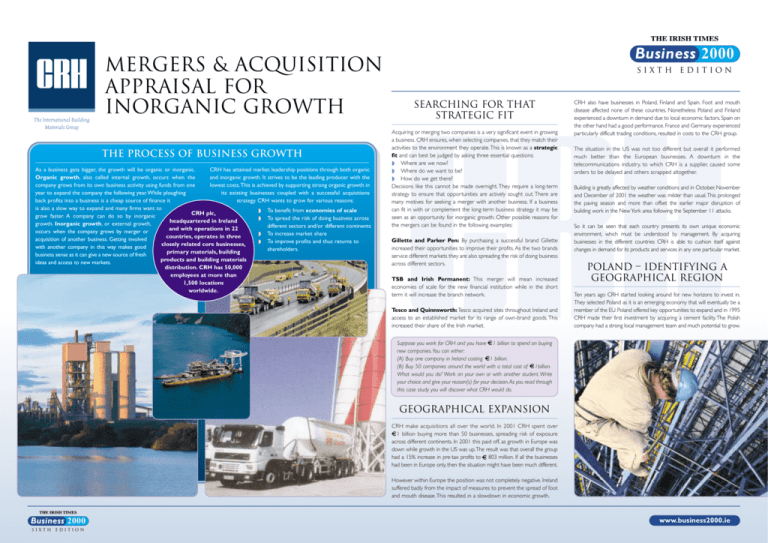
mergers & aCquisition Appraisal for Inorganic Growth the process of business growth CRH has attained market leadership positions through both organic As a business gets bigger, the growth will be organic or inorganic. and inorganic growth. It strives to be the leading producer with the Organic growth, also called internal growth, occurs when the lowest costs.This is achieved by supporting strong organic growth in company grows from its own business activity using funds from one its existing businesses coupled with a successful acquisitions year to expand the company the following year.While ploughing strategy. CRH wants to grow for various reasons: back profits into a business is a cheap source of finance it is also a slow way to expand and many firms want to ◗ To benefit from economies of scale CRH plc, grow faster. A company can do so by inorganic ◗ To spread the risk of doing business across headquartered in Ireland growth. Inorganic growth, or external growth, different sectors and/or different continents and with operations in 22 occurs when the company grows by merger or ◗ To increase market share countries, operates in three acquisition of another business. Getting involved ◗ To improve profits and thus returns to closely related core businesses, with another company in this way makes good shareholders. primary materials, building business sense as it can give a new source of fresh products and building materials ideas and access to new markets. distribution. CRH has 50,000 employees at more than 1,500 locations worldwide. Business 2000 SIXTH Searching for that Strategic Fit Acquiring or merging two companies is a very significant event in growing a business. CRH ensures, when selecting companies, that they match their activities to the environment they operate.This is known as a strategic fit and can best be judged by asking three essential questions: ◗ Where are we now? ◗ Where do we want to be? ◗ How do we get there? Decisions like this cannot be made overnight. They require a long-term strategy to ensure that opportunities are actively sought out. There are many motives for seeking a merger with another business. If a business can fit in with or complement the long-term business strategy it may be seen as an opportunity for inorganic growth. Other possible reasons for the mergers can be found in the following examples: Gillette and Parker Pen: By purchasing a successful brand Gillette increased their opportunities to improve their profits. As the two brands service different markets they are also spreading the risk of doing business across different sectors. TSB and Irish Permanent: This merger will mean increased economies of scale for the new financial institution while in the short term it will increase the branch network. Tesco and Quinnsworth: Tesco acquired sites throughout Ireland and access to an established market for its range of own-brand goods. This increased their share of the Irish market. edition CRH also have businesses in Poland, Finland and Spain. Foot and mouth disease affected none of these countries. Nonetheless Poland and Finland experienced a downturn in demand due to local economic factors. Spain on the other hand had a good performance. France and Germany experienced particularly difficult trading conditions, resulted in costs to the CRH group. The situation in the US was not too different but overall it performed much better than the European businesses. A downturn in the telecommunications industry, to which CRH is a supplier, caused some orders to be delayed and others scrapped altogether. Building is greatly affected by weather conditions and in October, November and December of 2001 the weather was milder than usual.This prolonged the paving season and more than offset the earlier major disruption of building work in the New York area following the September 11 attacks. So it can be seen that each country presents its own unique economic environment, which must be understood by management. By acquiring businesses in the different countries CRH is able to cushion itself against changes in demand for its products and services in any one particular market. Poland – Identifying a Geographical Region Ten years ago CRH started looking around for new horizons to invest in. They selected Poland as it is an emerging economy that will eventually be a member of the EU. Poland offered key opportunities to expand and in 1995 CRH made their first investment by acquiring a cement facility. The Polish company had a strong local management team and much potential to grow. Suppose you work for CRH and you have 1 billion to spend on buying new companies.You can either: (A) Buy one company in Ireland costing 1 billion. (B) Buy 50 companies around the world with a total cost of 1billion. What would you do? Work on your own or with another student. Write your choice and give your reason(s) for your decision.As you read through this case study you will discover what CRH would do. Geographical Expansion CRH make acquisitions all over the world. In 2001 CRH spent over 1 billion buying more than 50 businesses, spreading risk of exposure across different continents. In 2001 this paid off, as growth in Europe was down while growth in the US was up.The result was that overall the group had a 15% increase in pre-tax profits to 803 million. If all the businesses had been in Europe only, then the situation might have been much different. However within Europe the position was not completely negative. Ireland suffered badly from the impact of measures to prevent the spread of foot and mouth disease.This resulted in a slowdown in economic growth. Business 2000 sixth edition www.business2000.ie Since then CRH has acquired other businesses in Poland. These produce clay brick products, ready-mixed concrete, sand and gravel, precast products, insulation and fencing. Typical criteria Here are some of the typical criteria CRH will consider when choosing a company: CRH plc Group balance sheet as at 31st December, 2001 The CRH Group now has a broad product portfolio in Poland. It is the number one ready-mixed concrete producer in Warsaw and a market leader in cement. A recent 60 million cement plant upgrade in one of its firms has made it the largest cement plant in Europe. Market Situation: Is there a gap in the market? CRH will buy into companies that offer potential new markets for their existing range of products. m Employees from Poland are regularly invited to Ireland on training courses. This helps to spread the CRH culture. Here is what one employee had to say about her visit to Ireland. My name is Joanna and I work in the sales and marketing department in OKSM Ltd a subsidiary of the CRH Group. For my training I visited Roadstone in Ireland. This was an excellent opportunity to learn about Roadstone’s business and to become familiar with Irish culture. I spent my first week in Roadstone Rooftiles in Clondalkin learning about tile production technology, lab quality tests and customer service methods.The following week was spent in the North East Region (Drogheda, Slane and Castleblaney) and gave me a chance to see how a sales representative works. I had a chance to place explosive materials before blasting in the Slane quarry – that was really something special. Product Portfolio: CRH will want to ensure that the merger or acquisition will improve and complement the range of products offered by the group as a whole. Corporate Governance: The internal business management team is accountable to shareholders and will have to justify the merger. In the long run the merger must be sustainable. SWOT Analysis: Will the merger help CRH to develop the essential characteristics of their products so that they are different from competitors? Will the merger improve the strengths of the group and minimise the weaknesses? Will the merger give them a mass-market coverage or at least a niche that they can slowly build on? Globalisation: CRH is very aware of its corporate responsibility. Codes of conduct have been developed and applied to ensure the highest ethical standards in its operations. I spent the next week in the North West Region (Galway, Castlebar). My last week was spent in Belgard Quarry. Environmental issues: The environmental and social impact of corporate behaviour is monitored closely. Now I am back home, with a head full of new ideas and interesting information. Economies of scale: CRH will buy firms that give them scale advantages. Economies of scale occur when larger firms are able to lower their unit costs.This may happen for a variety of reasons. A larger firm may be able to buy in bulk, it may be able to organise production more efficiently or it may be able to raise capital cheaper and more efficiently. Human Resource Issues Once a company is purchased the real challenge of integrating it into the Group begins. The problems of combining two different cultures can be enormous. CRH has a series of performance measures or benchmarks that it uses to help the newly acquired company compare with. Best practice is shared throughout the Group and managers from one company will often be asked to act as mentors to another while the new standards are being acquired. Sharing the corporate culture is done carefully so that initiative in the newly acquired company is not stifled.They want to make the new company more efficient but also maintain the creative edge of its employees. Process of Identifying Ideal Organisations 2001 Current assets Stocks Debtors Cash, short-term deposits and liquid resources Creditors (due within one year) Bank loans and overdrafts Trade and other creditors m 1. 5,150.5 1,153.5 315.8 4,550.9 954.6 104.0 2. 6,619.8 5,609.5 m 1,002.1 1,693.0 1,463.3 903.0 1,535.7 1,361.9 4,158.4 3,800.6 503.5 1,655.3 2,158.8 1,071.5 1,523.6 2,595.1 3. 4. Net current assets 1,999.6 1,205.5 Total assets less current liabilities 8,619.4 6,815.0 Creditors (due after more than one year) Bank loans Other liabilities and provisions 2,853.5 895.4 Capital and reserves Share capital Profit and loss account Shareholders' funds Minority shareholders' equity interest 5. 2,910.2 794.0 3,748.9 3,704.2 4,870.5 3,110.8 2,190.9 2,544.5 6. 1,082.9 1,992.2 4,735.4 135.1 3,075.1 35.7 4,870.5 3,110.8 CRH plc Group profit and loss account for the year ended 31st December, 2001 7. Total Total 2001 2000 m m Turnover, including share of joint ventures 10,443.5 8,869.8 Cost of sales (7,023.3) (5,945.4) 3,183.5 2,756.4 (2,168.3) (1,843.0) Gross profit Operating costs Profit on disposal of fixed assets Why is it important for a company to expand geographically? Explain the following terms a. Financial Portfolio b. Product Portfolio c. Company Portfolio Outline the strengths, weaknesses, opportunities and threats facing a small concrete manufacturer. What are the fundamental differences between strengths and opportunities? Many businesses do not want to grow.They may consider they can give a more personal service and that if they grow too big they will lose control of the firm, product quality may suffer. From your reading of this case study can you think of advantages in business growth? "CRH cannot be accused of putting all their eggs into one basket." Do you agree with this statement? Give reasons to support your answer. Five possible measures of company growth are listed below. Using the data provided, indicate whether you believe the company has grown, in the case of a rise in value of each and give a reason for your answer: ◗ Profit rises ◗ Turnover (sales) increases ◗ The number of employees increases ◗ Market share increases ◗ Share price rises In Europe all mergers have to be reported to, and approved by, the European Commission. Why do you think mergers are so tightly controlled? What concerns does the Commission have? 16.3 12.8 Goodwill amortisation (59.2) (43.3) Trading profit 972.3 882.9 (173.3) (190.9) 799.0 692.0 (217.0) (193.7) Profit on ordinary activities after taxation 582.0 498.3 Dividends paid (35.3) (26.7) Dividends proposed (84.7) (66.7) The company is making good use of the money invested in it, showing a high return of nearly 15% for the year. Profit retained for the financial year 462.0 404.9 ACTIVITY: Stock turnover: Cost of sales / average stock 7023.3 / ( 903 + 1002.1 / 2) = 7023.3 / 952.55 = 7.37 times Group interest payable (net) Profit on ordinary activities before taxation After assessing the strategic fit of a new organisation by looking at geographical and product criteria, how do CRH decide which companies to buy? Which of the following companies would be an attractive target for acquisition? ◗ Company (A) has scarce resources ◗ Company (B) has assets that are under-performing or that carry the potential for improved future performance ◗ Company (C) presents the opportunity of economies of scale advantages All of the above would in fact be ripe for a merger or acquisition but there are among others other factors to consider. 2000 m Fixed assets Tangible assets Intangible asset - goodwill Financial asset - investments Conclusions Spending 1 billion may sound easy but this case study has shown that the decision to merge or acquire another company is not taken quickly.Years of planning go into finding and evaluating each target company. This is usually followed by protracted negotiations so that the final deal is beneficial to both parties. Even then the work is only starting as the whole process of integrating the new firm into the Group begins in earnest. However, when it is done correctly the rewards are great, as the firm will grow rapidly. tasks and activities Taxation on profit on ordinary activities www.crh.com These figures have been simplified for illustrative purposes.The complete financials are available in the CRH Annual Report and on the Group website at www.crh.com LIQUIDITY:Working capital ratio: CA:CL 4158.4 : 2158.8 = 1.92 : 1 Quick ratio: CA - stock : CL (4158.4 - 1002.1) : 2158.8 = 1.46 : 1 These figures show that CRH is very liquid. It will have no problem paying debts as they fall due. PROFITABILITY: Return on Capital Employed:Trading Profit / Capital Employed * 100 972.3 / 6764.2 * 100 = 14.37% Gross profit %: Gross Profit / Sales *100 3183.5 / 10443.5 * 100 = 30.48% Net profit %: Profit before tax / Sales *100 799.0 / 10443.5 * 100 = 7.65% NOTE: Capital Employed is net assets excluding cash and debt (4870.5 + 2853.5 + 503.5 - 1463.3). While every effort has been made to ensure the accuracy of information contained in this case study, no liability shall attach to either The Irish Times Ltd. or Woodgrange Technologies Ltd. for any errors or omissions in this case study. Business 2000 sixth edition www.business2000.ie
